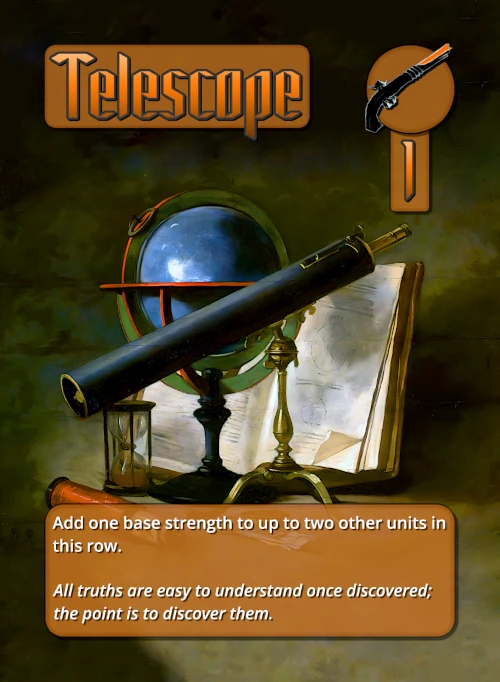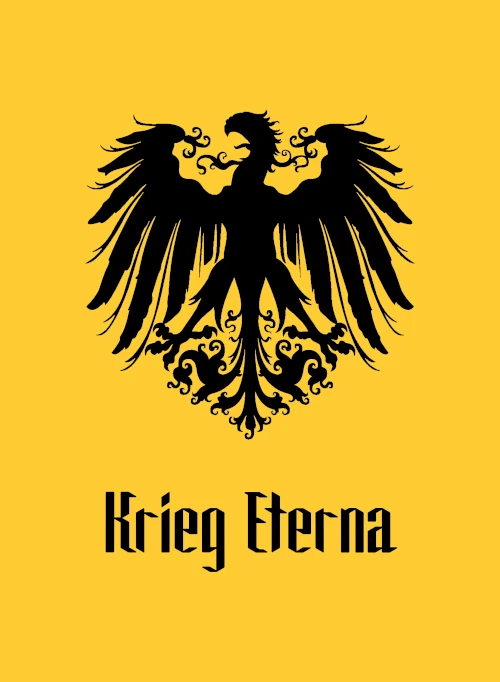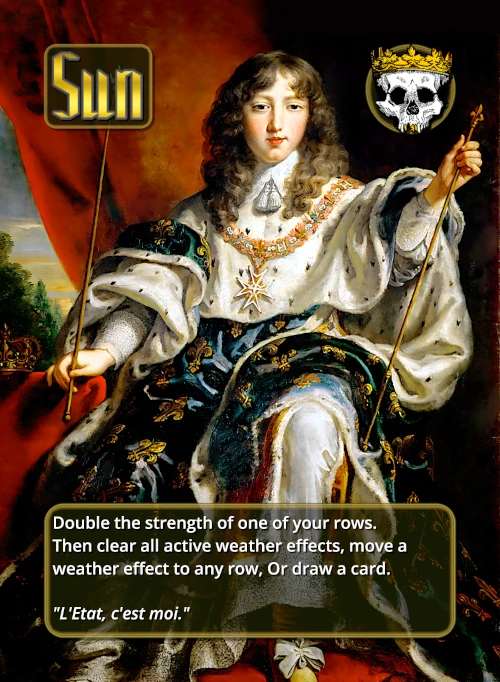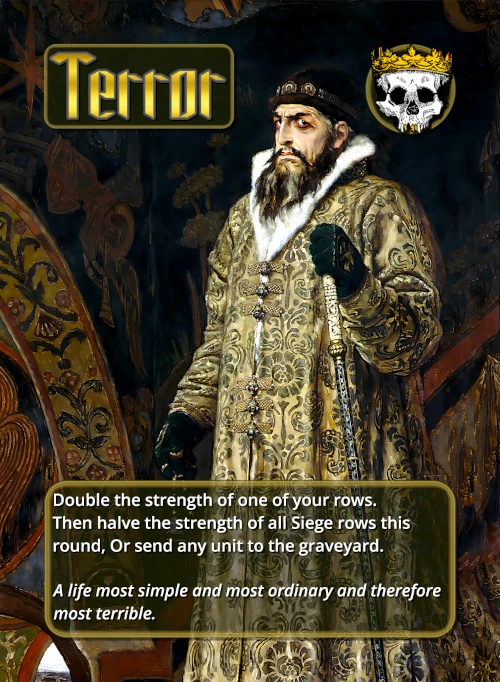Strength: 1
Type: Ranged Unit
Effect Text: Add one base strength to up to two other units in this row.
Flavor Text: All truths are easy to understand once discovered; the point is to discover them.
Flavor Source: Galileo Galilei, Dialogue Concerning the two Chief World Systems
Artwork: Still life with telescopes and an astrolabe, an hour glass, a book and a quill by Philippe Rousseau (1887)
Strategy:
Telescope is a support unit primarily used to create adjacency. Remember that it can modify up to two units, but doesn’t have to (none, one, or both are all valid choices). Also, you can change which units are modified at any time; it may be helpful to have the card partially overlapping with the other cards it is currently modifying.
About the card:
Galileo Galilei was one of the first astronomers to use the telescope. After hearing about a 1608 patent filed in the Netherlands Galileo soon replicated the result and produced a telescope with 20 times magnification. This allowed him to be the first person to witness the orbit of the Galilean Moons around Jupiter. These four: Io, Europa, Ganymede, and Callisto are Jupiter's largest moons and were the only ones that Galileo could readily see. Until the 1900's they were thought to be the only moons, but with modern optics we now know there are at least 95 moons of Jupiter.
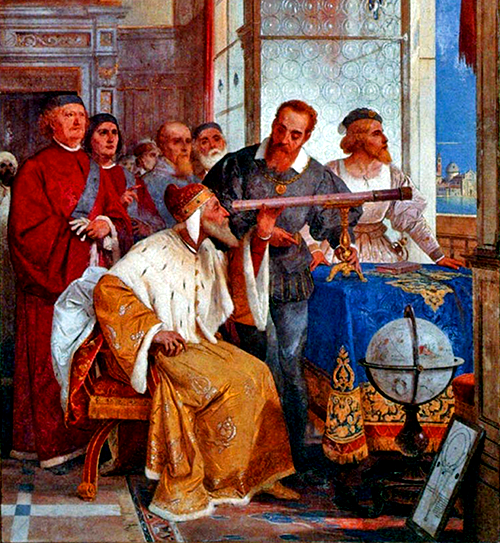
Ever the brilliant marketer, Galileo initially named the moons for Cosimo II de Medici, the Grand Duke of Tuscany and Galileo's patron, and his brothers calling them the Medician Stars (see also Pike). But, these names did not stick and so following the mythological naming scheme of the rest of the planets, the moons were named after Zeus' lovers in various tales. A planet in Galileo's time would mean "wandering star", as the planets are the only "stars" in the sky that seem to move relative to the others. One of the other uses of the telescope proposed by Galileo was to use the magnification to spot ships during naval combat. From the very beginning astronomy, science, and warfare were interlinked (see also Omen).



